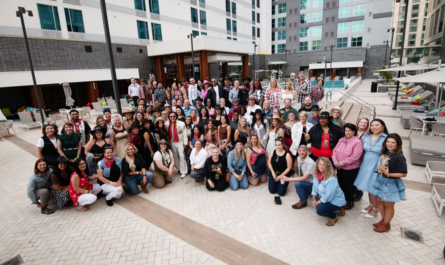How to unleash the power of multipliers.
By Graham Garrison
Tiffany Fleisch suffered a fall in 2022 while skiing in Utah that left her with an injured shoulder. As a result, her personal and professional life went on pause as she faced the healing journey from two shoulder surgeries and a hand surgery.
Forced to take time off work to recover, Fleisch’s life changed. Professionally, after her injury, she could no longer be the “doer” within the workplace but instead had to become a multiplier. A multiplier, within the content of the workplace, is an individual that empowers their team and encourages innovation and growth from other team members. Conversely, the opposite of multipliers are diminishers, or team members that intentionally get in the way of a team’s ability to accomplish tasks.
Leaders within the dental industry must figure out how they might accidentally diminish their teams. An accidental diminisher genuinely seeks to support their team but inadvertently hinders their growth. Even the best dental leaders can have blind spots, and sometimes the things they believe to be helping their teams are actually hindering them.
Often, leaders are the idea generators in the company and are passionate and optimistic about each new idea and project. However, when leaders are always the ones generating ideas, they often don’t give their teams enough credit for how hard a new idea will be to implement on top of daily responsibilities. Also, when implementing new ideas, leaders often forget to leave room for teams to fail and learn from their mistakes, or for them to have opportunities to provide feedback.
Look for genius
To grow, leaders must “look for genius” among team members. This means that instead of evaluating employees on whether they are top performers, consider how each individual is smart or successful at work. In what areas do they excel? What can be done to grow that specific employee, and how exactly are they performing better or worse than others?
“This perspective shift intentionally seeks out the ways that employees are using their individuality to move the company forward,” Fleisch said. When leaders transform their thinking this way, they find out that team members are often smart in more ways than we give them credit for.
Reform your thinking throughout all aspects of the business: just because someone has ideas doesn’t mean they can put them into action. Leaders must discover their team members’ gifts and talents to determine their best fit in the organization.
Leading individuals
As a leader, it often feels as though it is your responsibility to answer all your team’s questions, to provide every single solution, and to drive the entire organization or department forward.
“This is a common misconception,” Fleisch said. In fact, a poor leader will often tell their people what to do better and direct every single move their team makes. These leaders feel like they always must have the right answer, so they micromanage. Employees in this case also know that the leader has the answers, so they come looking to leaders for validation, even if they already know the answer themselves. Sometimes leaders become the roadblock themselves, because if the employee searched for the answer on their own, they’d have the potential to make a mistake, fail, but would learn from it and grow.
Successful leaders allow the space for their team to make mistakes and learn so that they can grow on an individual level. A good leader asks the questions instead of providing the answers. They realize that their people are capable and smart and that they can figure things out for themselves.
A good leader asks the right questions so that their employees can discover and be guided to the right solutions. “This process allows team members to search for solutions and drive new ideas and innovations that ultimately move the company forward,” Fleisch said. If guided to find the answers on their own, employees will take the initiative and come up with their own unique new solutions and ideas. Leaders shape company outcomes, and it is important for them to recognize that their employees can too.
Leaders should strive to be remembered as someone who helped empower their team, allowed employees to be autonomous and innovative, and helped grow the organization toward success.
Are you the genius or genius-maker?
When you look around your company, are you able to recognize whether you are the only one holding things up from moving forward? Instead of viewing yourself as the sole person at the company with the knowledge and ability, a leader becomes a genius maker when he or she seeks to pull the people around them up too. “Genius makers ensure that the employees around them are empowered and are as knowledgeable and successful as the leader,” Fleisch said.
Often, entrepreneurs are good at completing tasks and projects on their own instead of delegating. A leader’s weaknesses are often the overuse of their strengths, and a leader’s superpower can quickly become their accidental diminisher.
As leaders, there are strategies that can be implemented to practice, asking insightful questions and leading employees to come up with their own solutions to problems or questions. At first, when making this shift, leaders will quickly realize that guiding questions can encompass a variety of different scenarios. Start forming guiding questions by considering what the problem is and what questions can be asked to help employees get to the correct solution.
Sometimes, there are scenarios that we aren’t prepared for as leaders, and it is more than OK to have a “cheat sheet” of pre-written questions to guide employees. Creating a list of applicable questions is a great approach to begin giving employees autonomy when they come seeking help. When new scenarios come up, add them to the list, because they will likely assist in other scenarios, or the same situation might happen again.
“Some leaders are naturally good at coaching, taking a step back, and letting their people fail and learn,” Fleisch said. For those that it does not come as easily for, implementing distinct, concrete system to make the process of managing people easier can take abstract ideas and make them achievable.





